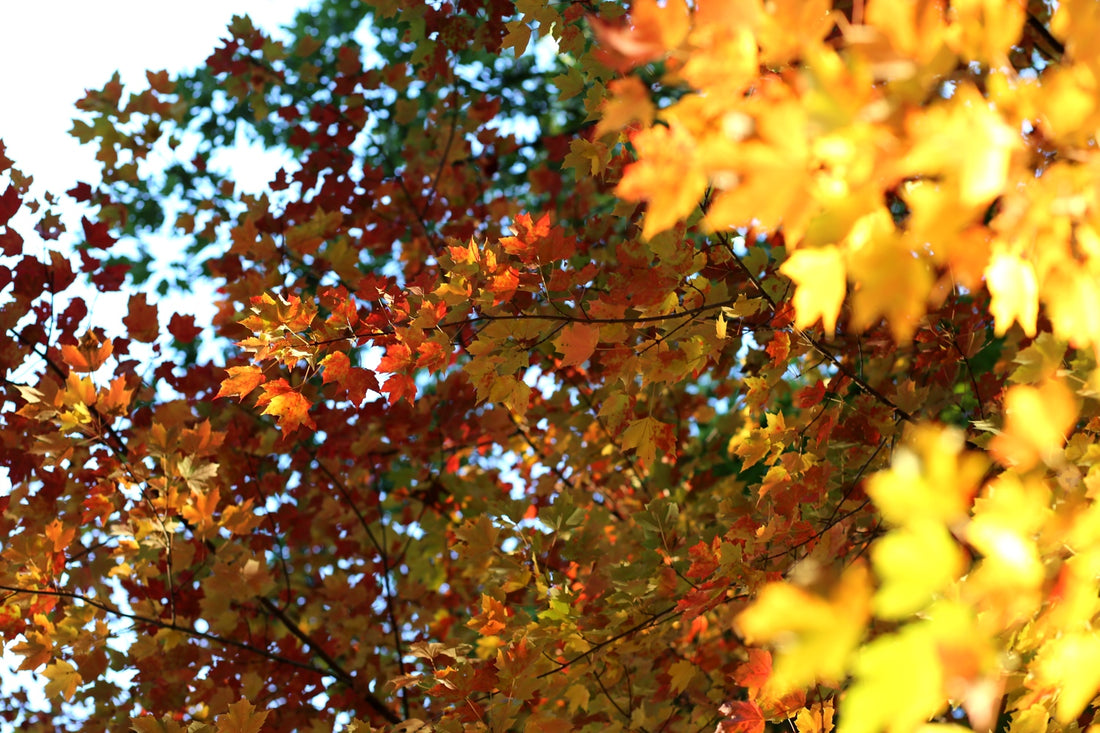While we may take autumn’s crimsons and golds for granted, hundreds of thousands of tourists are visiting Connecticut this time of year, many of them to view the pageant of our turning leaves. All we need to do is step out the front door. But some local spots are better than others for viewing the season’s bounty.
Edgerton Park is one. The walled estate was gifted to the city in 1965 by the Brewster family, which had owned it since 1906. Today, though the mansion is gone, the plantings remain. “We have a plan to follow, which primarily is the way the estate was planted,” groundskeeper Lianne Audette says. “And so if a dogwood dies there, we’ll put another dogwood back.” Their leaves already tinting a rusty red, dogwoods line the main walkway that crosses the park from carriage house to greenhouses. But you need not stay on the paths. “This is quite a hardy park,” Audette says. “We don’t have flower beds anywhere except in the community garden”—a fenced area on the south side.
sponsored by
That lack of formality is one of the reasons Edgerton makes for a delightful autumn stroll. Near the park’s west entrance, a beloved giant white oak tree seems to open wide its inviting arms. The highest branches of a maple brush their orange-painted tips against the blue sky. A grove of four huge copper beeches is anchored just north of the park’s stone fountain, their leaves transforming from green to burgundy. Above a certain height, the graffiti that has marred them disappears, and their bark turns smooth and gray, with ripples around the branches like wrinkled elephant skin. On the ground beneath, spiky beechnut pods lie splayed open, their nuts apparently the plunder of lucky squirrels.
Some of the park’s trees are labeled with metal tags, so an autumn walk here can be a little like a museum stroll, including some unique species—more unusual than maples and oaks, at least. There’s a towering false cypress, two Japanese pagoda trees dripping with seed pods like strings of pearls and a Lebanon cedar standing guard over a hill known for good winter sledding. Come back in the spring, Audette says, and you’ll see thousands of daffodils as they bloom across the lawn, along with the dogwoods and azaleas and 150-year-old rhododendrons.
If you prefer a less open, more wooded autumn stroll, try a ramble along the Mill River in the lower reaches of East Rock Park, where an acorn-knobbled path follows the water, and colorful leaves drift lazily in the current. A stairway leads walkers up to the expansive lawn of College Woods, stretching to the corner of Cold Spring and Livingston, where trees stand just far enough apart for their canopies to touch, and sunlight darts between the leaves. Even those that are still green turn gold in the light. The path continues through a parklike stretch along Livingston Street, where the pine trees are dropping their needles, too, and an occasional purple aster still blooms, protected from frost in the lee of a trunk. You can follow this path all the way up to the Eli Whitney Museum, then cross the covered bridge and return through the woods on the other side of the river.
Or, if a drive is more your speed, just head out Whalley Avenue through Amity and keep going. Route 69 (also known as Litchfield Turnpike) travels north alongside West Rock Ridge State Park, a mosaic of fall color rising behind the roadside trees. You can enjoy the view all the way into Bethany, then plunge into the woods at Gaylord Mountain Road, which winds through the changing scenery, following old stone walls at the forest’s edge that are sinking back into the earth. Eventually, the road takes a hard turn around Broken Arrow Nursery’s huge rock cairn and heads south again. The name of the road changes—Gaylord Mountain to West Todd to Brooks—but the route requires no turns, just a circuitous trip through age-old woods to enjoy its scraps and splashes of color. Brooks Road runs into Downs Road, which skates thrillingly close to Lake Watrous and drops you out on the turnpike again.
Back in late August, WTNH meteorologist Sam Kantrow predicted that a warmer-than-average fall could push peak leaf colors on the coastline as late as November 21. That could well turn out to be true. But the leaves are already popping in many New Haven treetops, and unlike out-of-state visitors, we can feast our eyes again and again, for as long as the color lasts.
Written by Kathy Leonard Czepiel. Image 1 photographed by Dan Mims. Images 2-6 photographed by Kathy Leonard Czepiel.









